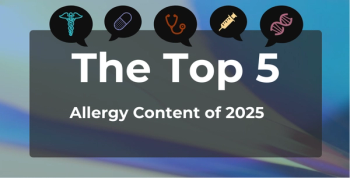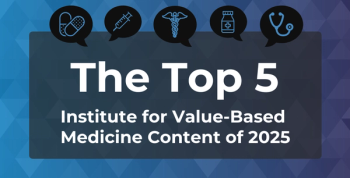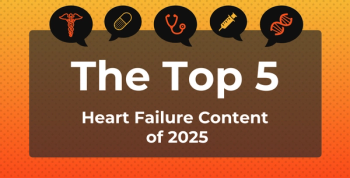
Low Trial Enrollment, Racial Disparities Limit Breast Cancer Treatment Innovation
Key Takeaways
- Breast cancer is the most-researched disease, yet only 14% of trials reach optimal enrollment, highlighting a significant gap in clinical trial participation.
- COVID-19 has increased trial attrition rates, which remain high, necessitating further investigation into underlying causes.
Artificial intelligence models may advance clinical trial design and enrollment to improve trial success and patient outcomes.
Despite ongoing clinical advancements in
On World Breast Cancer Day 2025, Phesi, an artificial intelligence (AI)-solutions-driven clinical data company, published an analysis on the most globally researched diseases. Breast cancer was reported to be the most-researched disease for the fourth year in a row since it began its ranking in 2021.
Furthermore, Phesi’s analysis reported higher attrition rates during phase 2 of all clinical trials, rising 3% from 2023 to 2024. The high rate of termination was exacerbated by the COVID-19 pandemic; however, experts believed they would return to normal afterwards, but instead they continue to remain nearly twice as high as pre-pandemic rates.
“[The pandemic] obviously had its negative momentum, and hopefully by the end of this year, we will see it coming back in that trend towards more reduction in attrition rate,” said Gen Li, PhD, president and founder of Phesi, in an interview with The American Journal of Managed Care®. “If that's not the case, then we will have to search deeper to understand what happened and why it happened that way.”
Phesi identified 256 key opinion leaders across 24 countries who have led more than 5 clinical trials each. Using these data, they found that KOLs and trial sites are also concentrated in countries like the US (30%), China (15%), and Spain (6%). Although the US and China may be leaders in breast cancer research, their vast populations make outreach and health equity difficult.1
“If you're looking at China, the areas outside some of the major metropolitan areas, the standard of care is still fairly poor in the US,” Li said. “We have this existing and ongoing racial and ethnic inequality still going and all of those other things demanding us to work harder and find ways, particularly using data science and digital and artificial intelligence, to help us to be more focused on those demographics.”
Low Enrollment in Breast Cancer Clinical Trials
Clinical trial enrollment remains an important factor in delivering actionable insights that will drive innovation in breast cancer therapies. However, low enrollment is a persistent issue, especially regarding breast cancer clinical trials.
Trialbee is a software-as-a-service patient recruitment platform aimed at improving strategies to centralize and standardize clinical trial patient recruitment. Their recent partnership with Bristol Myers Squibb (BMS) helped the biopharmaceutical company replace its outdated approaches to clinical trial recruitment. Using Trialbee’s recruitment consolidation platform, Honey, BMS was able to route patients directly from research displayed on their website to the proper clinical site communications.3
“Global biopharmas like BMS are leading the way by championing the last mile, because finding patients is only part of the equation,” said Trialbee's CEO Matt Walz in a
In addition to low enrollment rates, there is also a gap in diverse representation. Despite some communities’ equitable access to clinical trials, enrollment remains low, even amongst those belonging to minority populations and with aggressive subtypes of breast cancer. Beyond access, multiple studies have shown that patients of different races are equally willing to participate, yet diverse representation in research remains unjustly limited. 4
Restrictive criteria in regard to opportunity may also be the cause for unvarying clinical trial populations. Black patients have been seen to have higher rates of comorbidities like hypertension or diabetes, thus preventing them from meeting the study criteria. Blatant mistrust in the medical system may also play a significant role in the low enrollment of Black patients. Given the historical misconduct of the medical system against Black patients, many studies show that a lack of trust is one of the most common factors for not registering.4
“In the cancer clinical trials, many of the patients don't want to be part of clinical trials because they are afraid to be put on a placebo or a fair comparator,” Li said in an interview with The American Journal of Managed Care® (AJMC). “It's just not ethical for the sponsors to put [patients who are] basically in a dire situation on the placebo.”
Phesi’s digital patient profile aims to simulate clinical trial control arms to reduce the number of patients who may receive the placebo or fair comparator. Li believes this will encourage more patients to continue their treatment and potentially increase enrollment.
“If we are able to mimic how those placebo patients would be behaving using the digital twin, then we will be able to reduce the exposure of those patients to the placebo and to all the inferior comparators,” Li said.
Disparities in Clinical Trial Access
Access to clinical trials is not only limited by race or socioeconomic status but by age as well. A
“We have to continue to counsel these patients and also providers on why this may be a really good option for women in that age group,” Tabby Khan, MD, senior director of analytics at Komodo Health, said in an interview with AJMC. “I think that we really need to investigate and make sure that these patients feel empowered to ask for these therapies and providers feel comfortable with the side effect profile and things like that as they start to prescribe them.”
Khan also mentioned that despite the age gap, Black women were seen to have higher rates of ADC treatment, as their usage rates appropriately reflected the higher prevalence of triple-negative breast cancer. The analysis also found that patients in urban areas had higher rates of ADC treatment than those in rural areas.5
“Geographically smaller, lower-resource regions do get left behind, but I would say just broadly across the board, we need to use technology to address this gap, both in terms of drug delivery and also in terms of patient knowledge sharing,” Khan said.
Komodo Health partnered with the Tigerlily Foundation, a national breast cancer patient advocacy organization, to deliver these insights.
“Understanding the factors that contributed to these patterns can inform future therapeutic development," said Maimah Karmo, CEO and founder of the Tigerlily Foundation, in the Komodo press release. "However, the question of why older women have significantly lower treatment rates remains critical and demands investigation to ensure appropriate care for all patients."5
A Call for Inclusive Innovation in Breast Cancer
With breast cancer clinical trial data counted and measured on a global scale, it can allow companies like Phesi and Trialbee to provide actionable resolutions to the current gaps in breast cancer clinical trials.
“Imagine we can actually simulate the clinical development process by using those contextualized patient data and also simulate the clinical trials,” Li said. This would “actually allow the clinical development people to meet their patients before they even start planning their own trials.”
AI has the potential to increase enrollment and reduce the costs and risks to clinical trial sponsors and patients by optimizing trial design. Compounding research from health care analytics companies like Komodo Health and using modeling tools such as Phesi’s digital patient profile and Trialbee’s Honey platform can enhance clinical trial design. Therefore, improving patients' access to new treatments and accelerating not only breast cancer research but also oncology research as a whole.
References
1. Breast cancer tops most-studied diseases list for fourth year, but trial attrition rate rises. Phesi. Accessed October 17, 2025.
2. Only 14% of breast cancer trials reached optimal enrollment targets in 2021, despite being the most studied indication globally. Phesi. February 3, 2022. Accessed October 17, 2025.
3. Trialbee and BMS Session “from Click to Clinic” at DPHARM to showcase how the Honey Platform reinvents the last mile of patient recruitment for trial finder websites— Trialbee. Trialbee. September 15, 2025. Accessed October 17, 2025.
4. Podany EL, Bulsara S, Sanchez K, et al. Breast cancer clinical trial participation among diverse patients at a comprehensive cancer center. NPJ Breast Cancer 10, 70 (2024). doi:10.1038/s41523-024-00672-0
5. Komodo Health analysis uncovers a dual reality in metastatic breast cancer care: rapid targeted cancer therapy adoption amid glaring age-related disparities. Komodo Health. October 20, 2025. Accessed October 20, 2025.
Newsletter
Stay ahead of policy, cost, and value—subscribe to AJMC for expert insights at the intersection of clinical care and health economics.







































